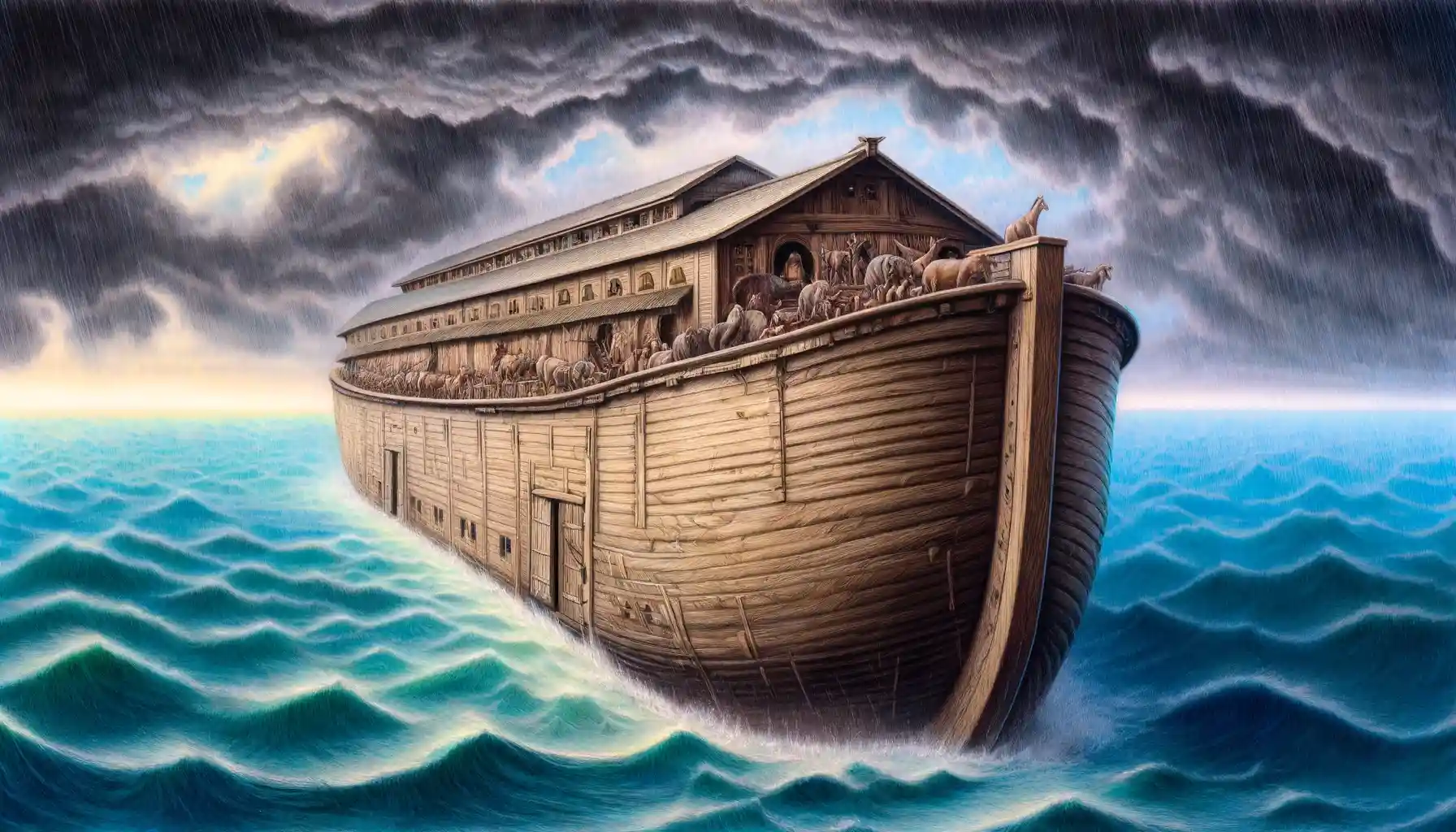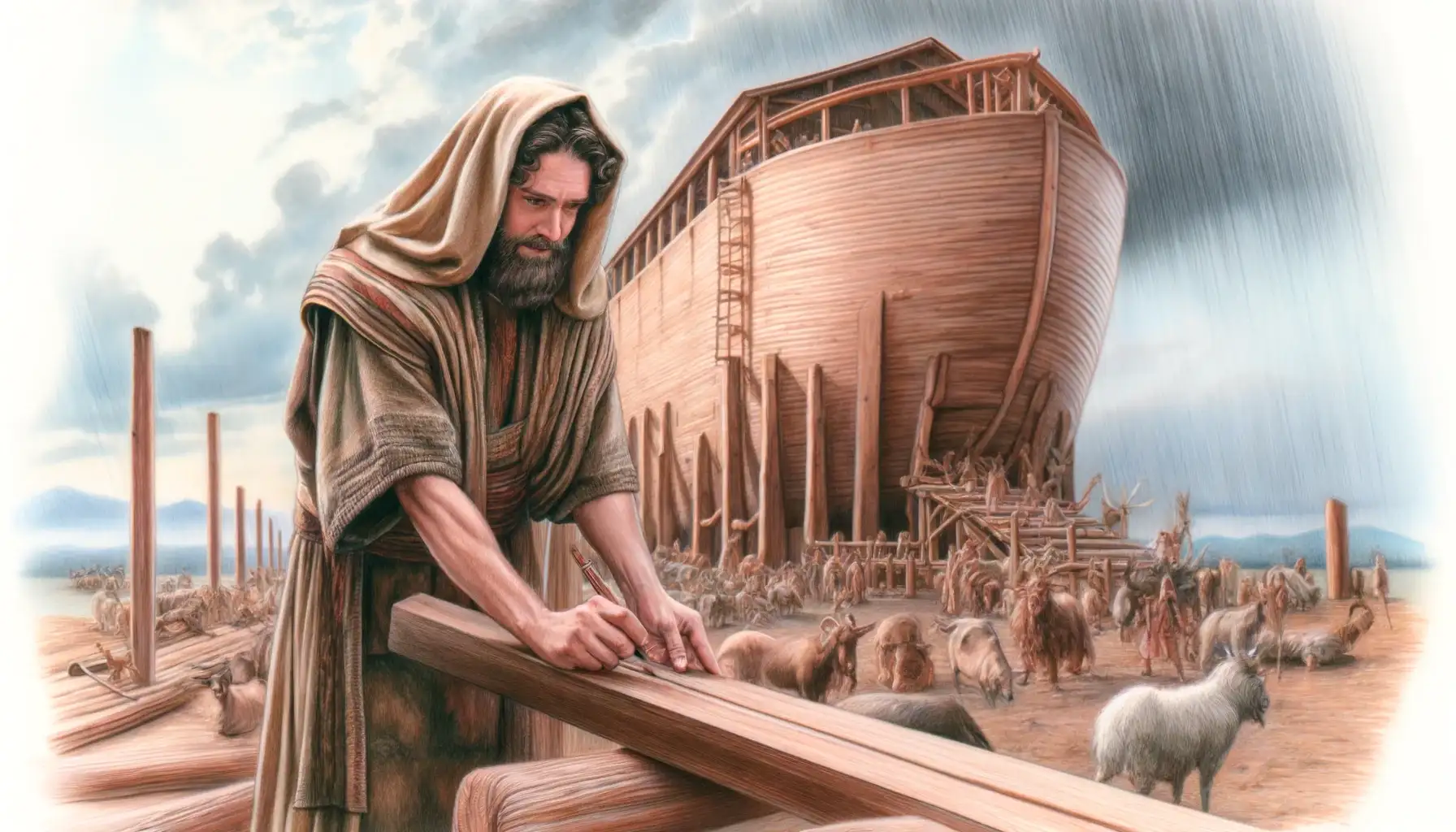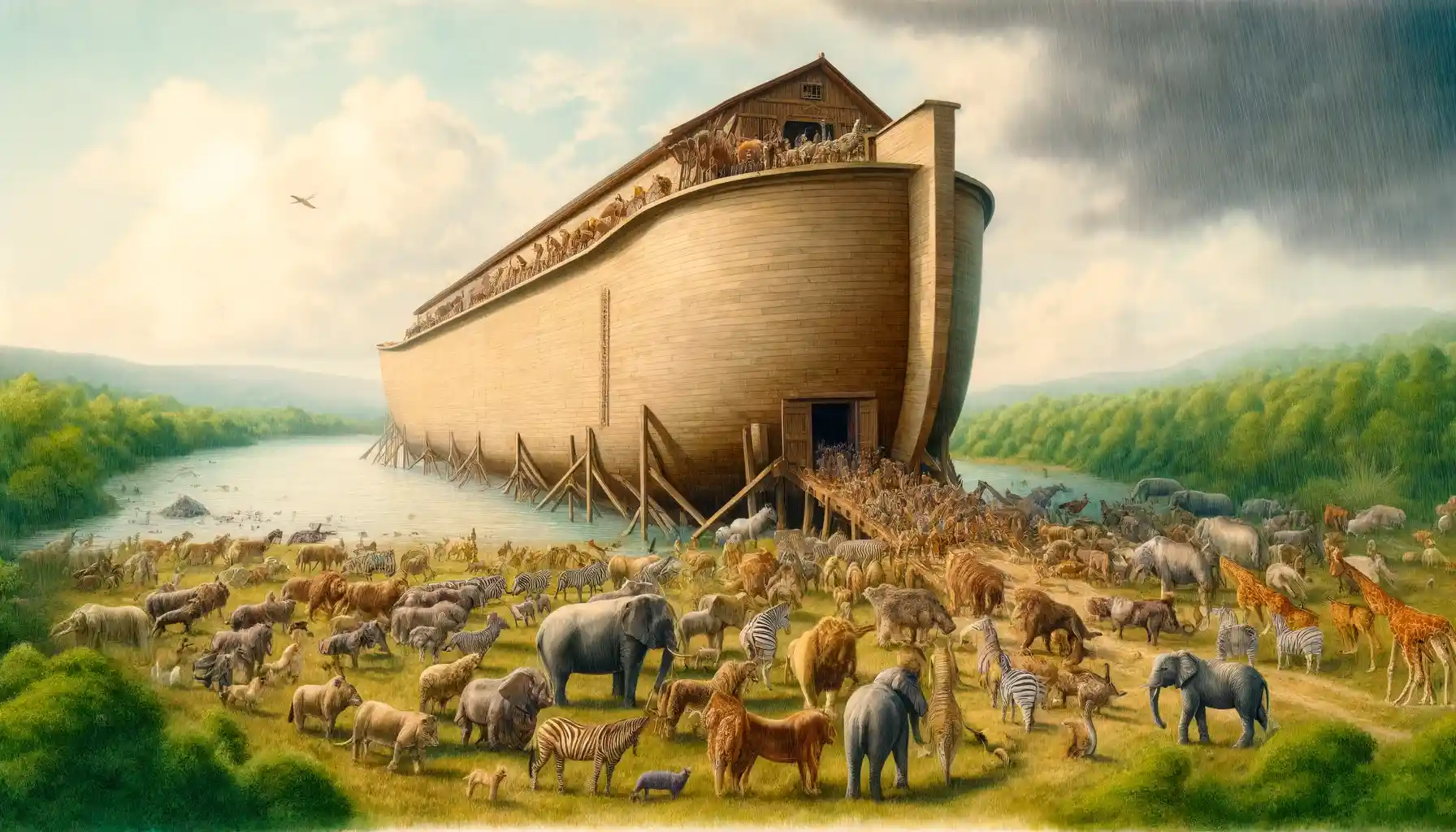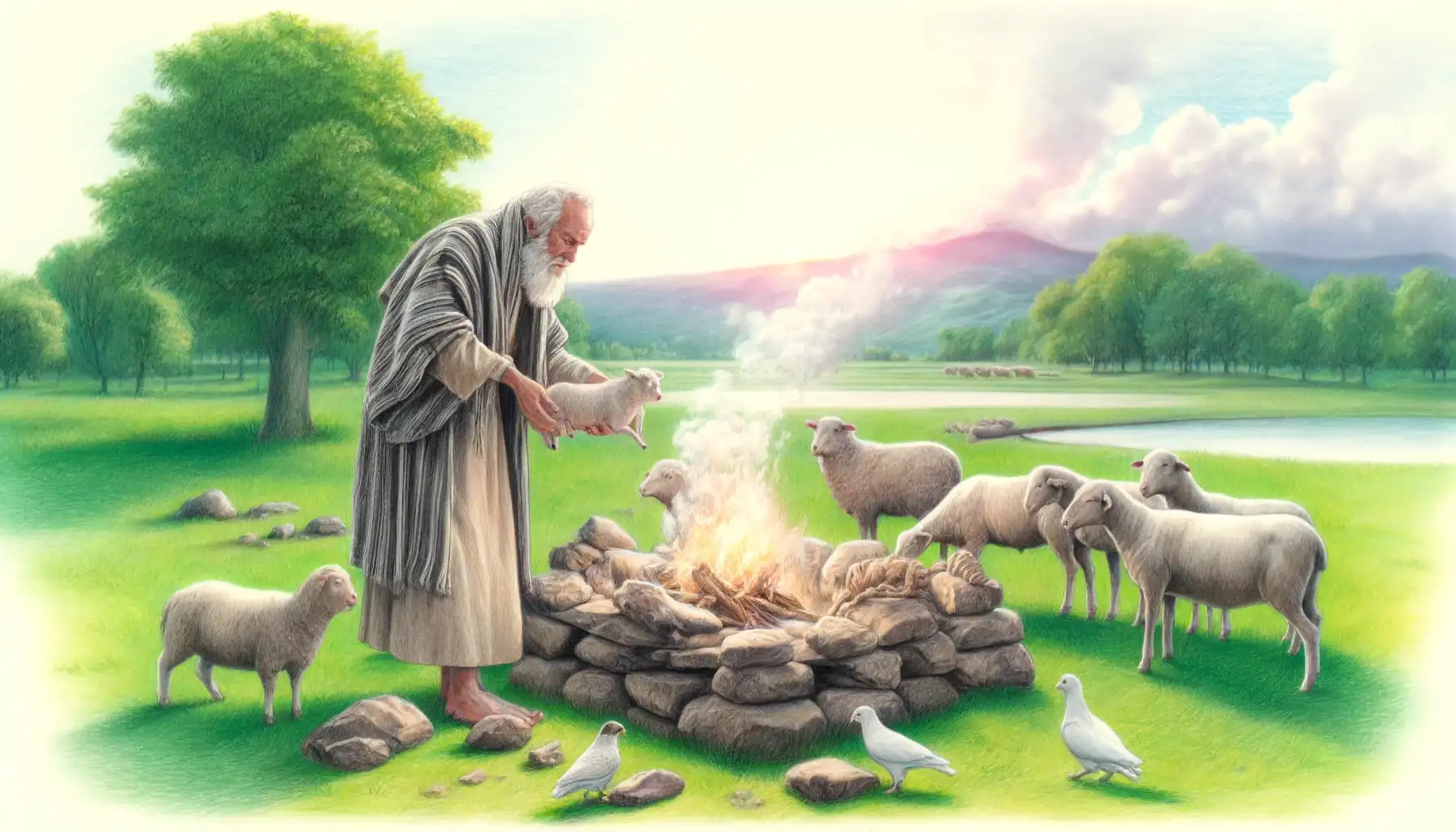Noah’s Ark, a massive vessel made of gopher wood and sealed with pitch, was built to specific dimensions to house Noah’s family and pairs of all animal species during the Great Flood, symbolizing God’s salvation and judgment.
Noah, a righteous man chosen by God, built an ark to survive the Great Flood, preserving his family and pairs of every kind of animal, and established a covenant with God promising never to destroy the earth with a flood again.
In the biblical narrative of Noah’s Ark and the Flood, detailed in Genesis chapters 6 through 9, God decides to cleanse the earth of its pervasive wickedness by sending a catastrophic flood, sparing only Noah, a righteous man, his family, and representative animal species who survive in a divinely instructed ark, leading to a renewed covenant symbolized by a rainbow.
Genesis 8:20-21 depicts Noah building an altar and offering sacrifices of clean animals to God, who, pleased by the aroma, promises never again to curse the ground or destroy all living creatures, despite humanity’s inherent sinfulness, thus establishing a foundational moment of covenant and grace between God and mankind.




